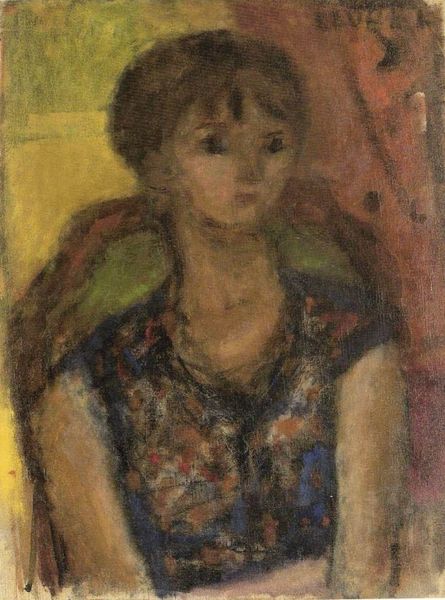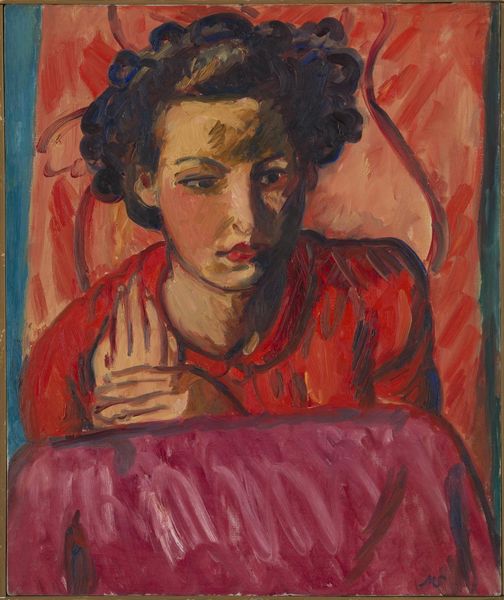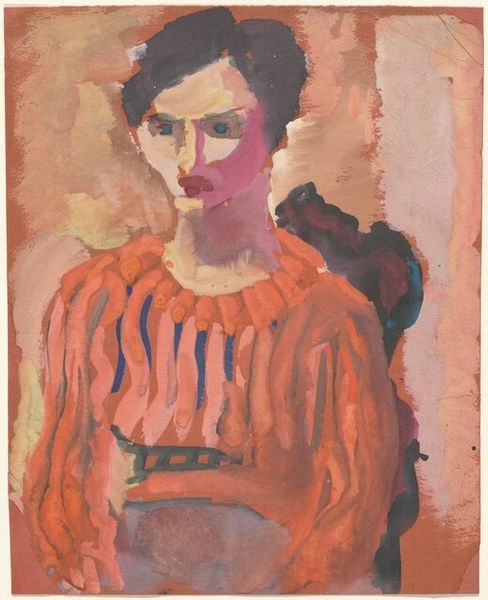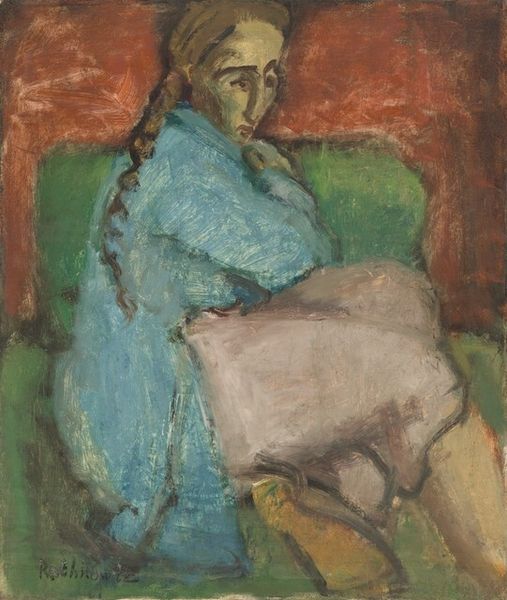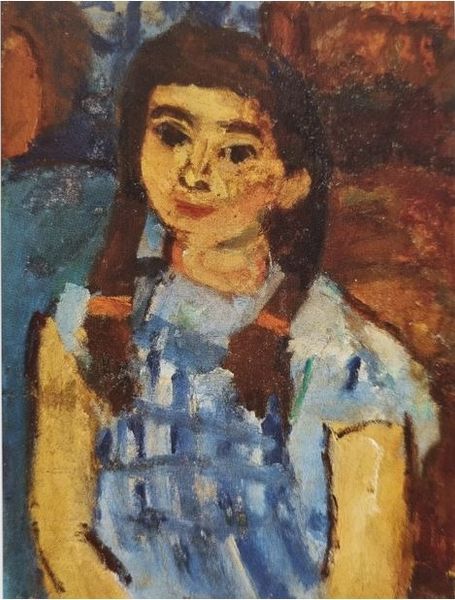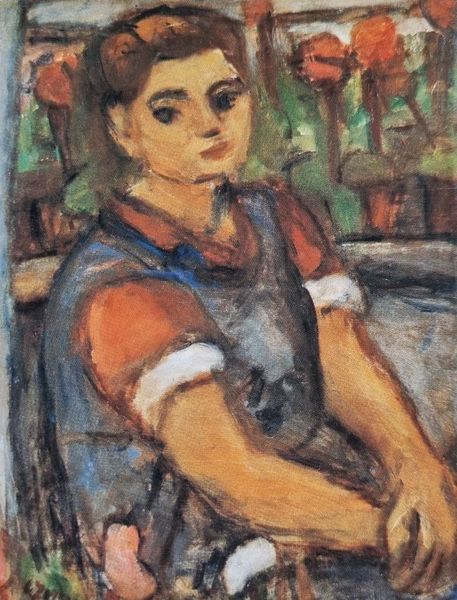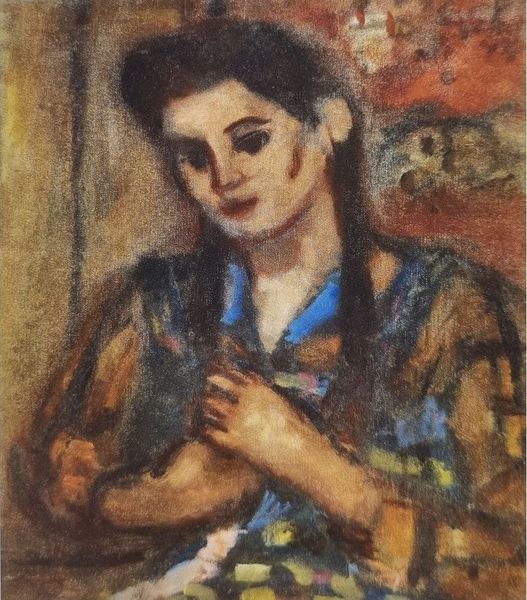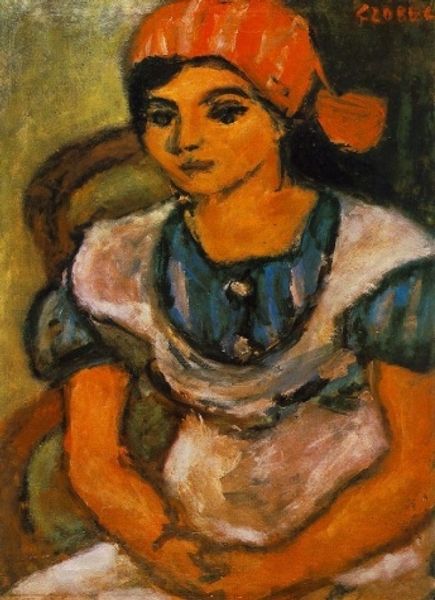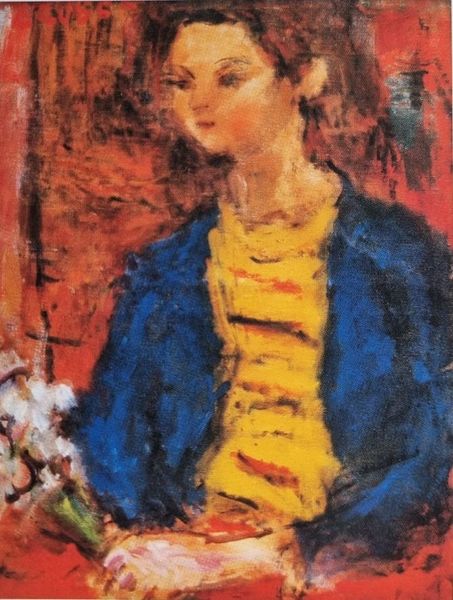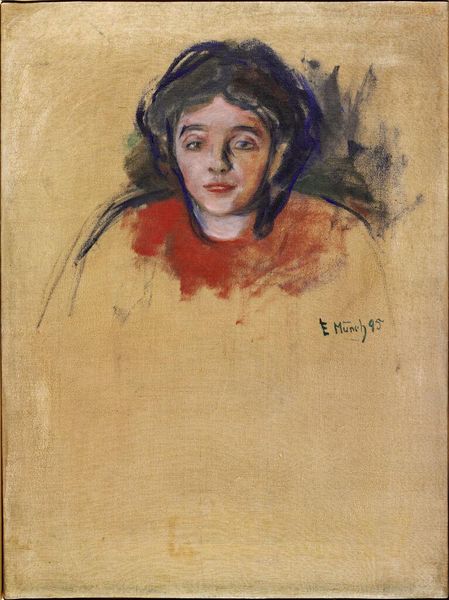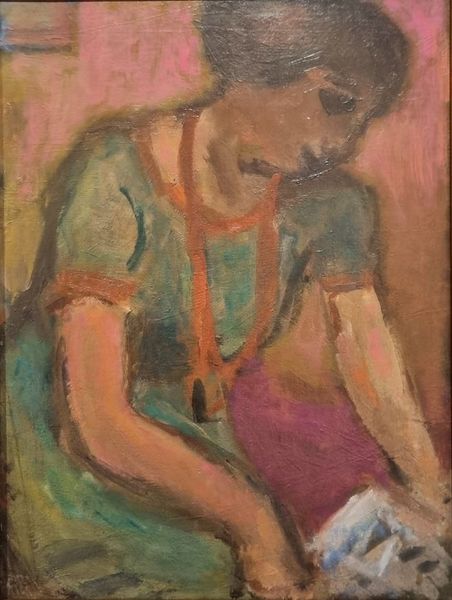
Copyright: Bela Czobel,Fair Use
Curator: We’re looking at "Czobel Bela 1960 Pros Felsős Lány" painted in 1960 by Bela Czobel. Editor: There’s something haunting about the portrait. The somewhat muted colors, combined with those stark lines… it’s subtly unsettling. Curator: Czobel was a Hungarian painter who played a crucial role in bringing early modernist styles from Paris to Hungary. This painting showcases his mature exploration of Expressionism and figuration, where emotions are emphasized over realistic representation. Editor: Yes, and you see that in the way the subject's features are almost sculpted with paint. There’s a definite emphasis on shape and form, not so much photographic likeness. It has the quality of emotional truth over outward appearance. The bold strokes creating a solid, palpable structure of planes... I'm fascinated. Curator: Consider how the "Felsős Lány," which translates to "Upper Girl," might represent a specific societal role or ideal imposed on young women during that period, and how Czobel, perhaps subversively, rendered that with abstraction rather than idealization. The political in the personal. Editor: That splash of brighter blues and purples behind the figure—it almost fights against the earthy tones dominating the portrait. Curator: Precisely. Even Czobel's technique has an implied political message: his art reflected, through distortion, the complex realities of social experiences. Editor: Looking at it now, you’ve shifted my perspective, considering how her figure emerges from and struggles with that colorful background. I notice new subtleties of light and shadow; it changes everything! Curator: His artworks provide us with the vocabulary to critically examine those eras. It opens conversations and invites revision. Editor: And now, understanding this context, I can really appreciate the interplay between technique and social commentary. Thank you.
Comments
No comments
Be the first to comment and join the conversation on the ultimate creative platform.

